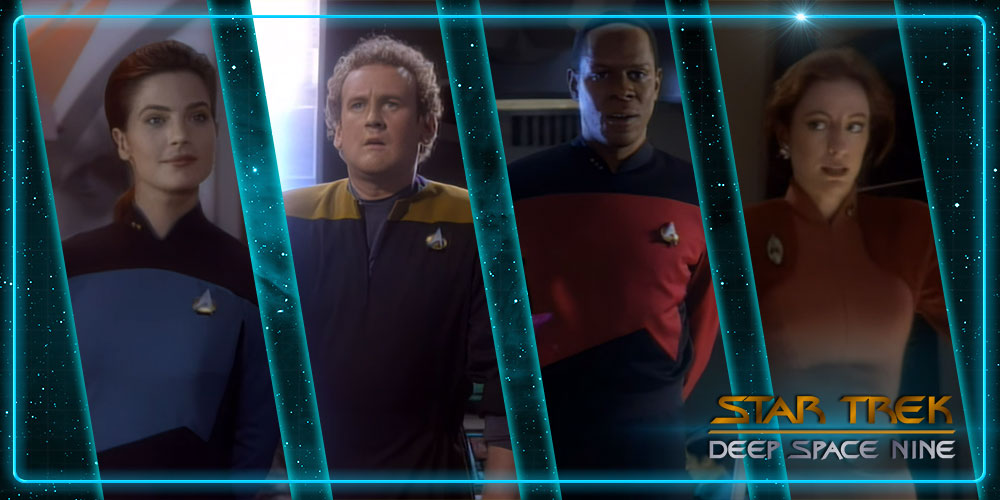It feels impossible that it’s been nearly thirty years since our Trek childhood was ripped away and we watched Commander Sisko’s life and family be ripped to pieces by the Borg and Locutus at Wolf-359.
Thirty years since we first got our big, sweeping view out of the starship window of that surprisingly alien-looking space station. Thirty years since we heard, for the first time, what many would contend is the best Star Trek theme tune ever written. Thirty years since “The Emissary,” and the beginning of Deep Space Nine.
In many ways, the first thirty seconds of the opening cinematic reflect how the show progressed over the years it was on-air, as well as its lasting legacy. The station, the namesake of the show, the place where (ostensibly) much of the action is to take place, appears on-screen as a small, strange, novel, but a peripheral gem.
It is only after the invitation to come closer and enjoy the intricacies that we find the beauty of the station. (And it is, obviously, a beautiful design. The cinematic continues to be sweeping views of the promenade and the docking arms, the glowing red core at its base, and at its head, ops.)
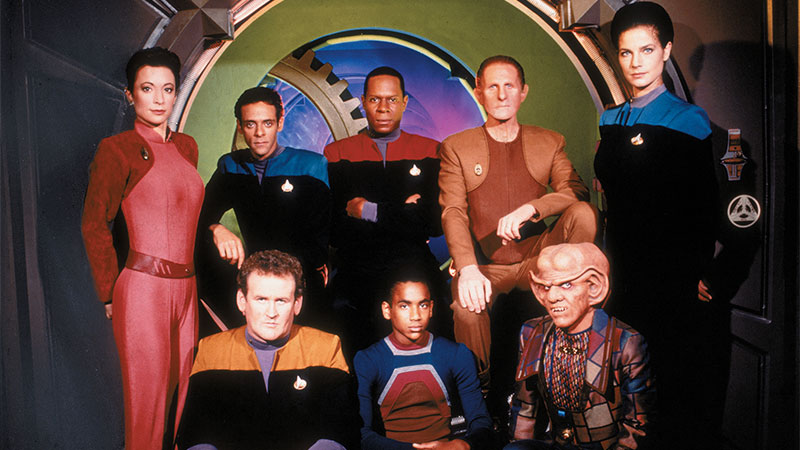
30 Years On!
But the show is instructive, thirty years on, in new ways, given the new landscape in which it can be enjoyed. It’s impossible for me to forget how I felt, as a young teenager, high on the success of the recent movies and the first five seasons of The Next Generation, watching “The Emissary” for the first time.
I summoned up the mixture of emotions easily when I recently re-watched the episode. I remember confusion at the darkness of the intro, as the Borg tore through the Federation in an episode I remembered distinctly from TNG (“The Best of Both Worlds”). It put me on guard rather forcefully that this was going to be a new kind of Star Trek.
Those seconds of Sisko looking back at the explosion of the USS Saratoga, the haunted, injured look in his eyes, is an indelible memory. Avery Brooks, for me, confirmed his aptitude for this role in those seconds. A family man, who lost his partner, raising his son alone. Obviously, I was in for a different Trek.
Up until fairly recently, it’s been impossible to describe how that felt to a newer fan who has had more than just TNG and TOS to lean on. In my family, though we ate dinner together nearly every night through the 80s and most of the 90s, presenting a very Norman Rockwell front, we coloured our virtue with convenience, and the fifth member of our dinner table was very often the television.
By the late 80s, once a week the companion at dinnertime (or immediately following, depending on the scheduling) would be Captain Picard and the team, on board the USS Enterprise. They quite literally felt like part of the family dining experience, with my parents and brother and me.
And on January 3, 1993, a week or so after we watched Picard’s triumph over Gul Madrid in “Chain of Command” we watched this brand-new character show us something in Star Trek that we simply didn’t get to see very much of back then: consequences.
As fans, we all knew that Wolf-359 was a horrendous event, a massacre, a tactical blunder, and a galvanizing event for Starfleet. It’s an event, like few others, that can be referred to simply by its location. Gettysburg. Waterloo. Khitomer.
Events that have all the feeling of inevitability, but only in retrospect. TNG touched, with only the softest of gloves, the fallout of Picard’s assimilation by the Borg. It remained a touchstone throughout the rest of the series and associated movies (and spin-off series!), but that’s all it was: a scar, presented on the psyche of Jean-Luc Picard.
It didn’t seem to do very much. It made him wrestle his brother in the mud once, another time he nearly ordered a genocide, and once the Federation actually side-lined him because they thought he might crumble under the stress of facing the Borg again, even though there was absolutely no evidence of that ever being an issue.
And up until his synthetic years, he could still hear the Borg “song.”
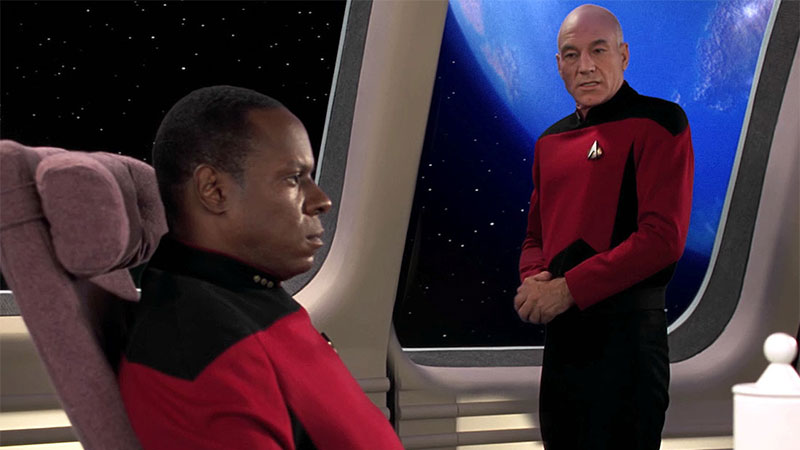
Picard Vs Sisko
However, I feel we didn’t get repercussions until DS9. Until we saw what Locus of Borg did to Lt. Cmdr. Benjamin Sisko via the Borg invasion of Earth. Benjamin Sisko, the damaged commander of Deep Space Nine, the Emissary of the Prophets of Bajor, was the first time Trek really dug in and tried to tell a story that reverberated.
Allegories are great, and sci-fi is a tremendous vehicle in which to hide your message, but the reset button that was pressed at the end of the credits after every episode of Trek until then made the more complex messages too difficult to transmit.
That’s often why Trek has been accused of ham-fistedness throughout its storied lifetime—because up until very recently the serialized nature of Trek meant that one episode couldn’t really change the story of another, it is left to guest stars to transmit sudden character growth and present dichotomies for the main, unchanging cast to note and solve.
Sisko was the first captain (I’m going to call him a captain even though, ridiculously, suspiciously, he was brought into the role with the rank of commander) of a Trek show who was shown to have been damaged by Starfleet.
That’s big. Because Gene Roddenberry had already passed a few years prior, even though he knew about the production before he died, at least in concept, this was really the first outing of Trek that was doing so without the Roddenberry seal of approval, so to speak, and loyal viewers tuning in from home could feel that.
Not only was Sisko a character with loyalties outside of Starfleet, but half of his staff on this enormous Cardassian station would be Bajoran, another huge departure for Trek, and many of them would seek entertainment at the local bar/casino run by a cadre of Ferengi.
It’s simply impossible to explain just how much of a leap of faith the folks at Paramount were taking, jumping into new territory and simply assuming there’d be an audience there to catch them. In the 90s, that just didn’t happen very often, and it was unheard of for sci-fi.
We’ll only have hearsay and recollections of memories to go on now, so it’s hard to truly understand how it felt to be Ira Steven Behr, Michael Piller, and Rick Berman in this situation, making risky creative & business choices in a very corporatized Paramount environment.
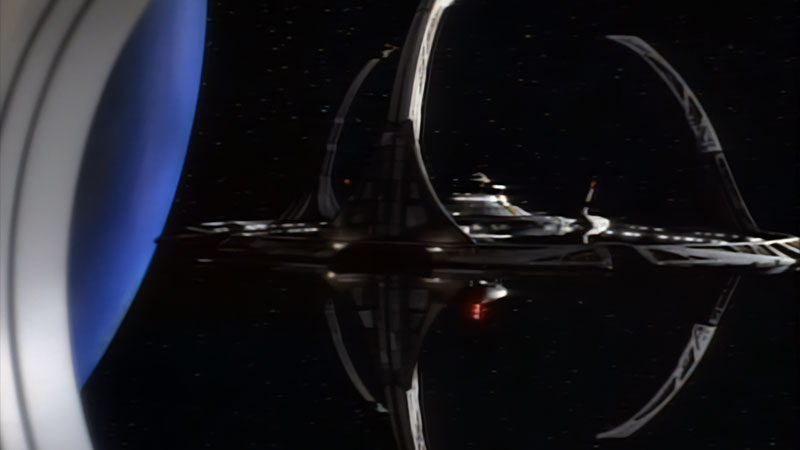
ruined my Star Trek
But with the more-recent launches of Discovery, Lower Decks, Picard, and Strange New Worlds, I was reminded of precisely how it felt to be a Trekkie at that moment in 1993. In a word, I felt betrayed. I was 13 years old, living in the middle of America. Most of the people I knew had lives that were very much like my own on the surface, looked a lot like me, and thought a lot like me.
Oh sure, I was an outcast in the greater picture because I liked books and sci-fi and computers, but as a (lower) middle-class cis white male, I know now that the number of privileges I was born with (many of which I still have, despite my disinterest in having them) would stagger a team of oxen. As an adult, I fight many of those behaviours my upbringing cultivated in me.
As a child, in the nineties, my mind wasn’t prepared to register that even as an option, let alone something that should be considered. No, back then, DS9 ruined my Star Trek.
It’s a refrain we hear rather frequently today if you’re at all involved with the social aspects of being a Trekkie, especially if engaging online. You don’t have to go far on Twitter or Facebook to find someone shaking their fist at the clouds over some new great offence they’ve suffered at the hands of the evil Alex Kurtzman and his cadre of social justice warriors-cum-writers and their needlessly diverse cast of woke evangelists.
I completely understand the perspective. It’s taken many years of therapy and self-reflection, but I can also say, now, that I don’t share the perspective. No, DS9 did not send me running to a therapist to find out why I hated the show so much. But in the examined life, I can take lessons I learned from one situation and apply those to other, completely different situations.
I have learned how to unpackage my emotional outbursts before they erupt out of my mouth or fingers and retrieve any nuggets of actual wit out of the sack of bile they arrive in and analyse them outside of such toxic environs.
Merely by existing, DS9 had already challenged me, personally, more than any Trek show prior, and that’s before even digging into the wealth of stories the show brought. Honestly, I wasn’t capable of doing that then, and consequently, I didn’t follow DS9 when it initially came out.
I didn’t have to, because it ran concurrently with TNG for another season, and finished up mostly concurrent with Voyager. So as a family, we just watched those. We had a VCR in those days, and my father invested in sufficient blank VHS tapes that we had (almost) every episode of TNG and Voyager on tape, recorded without commercials (my father was a patient man), in order of presentation. To my knowledge, we had none of DS9.
It wasn’t just that the lead was a black man, or that the second-in-command was a terrorist, or that the chief of security was a pool of jelly, or that the chief medical officer was a lecherous man-child, or that they weren’t even on a starship, but the show challenged other norms by presenting the absolute least human Star Trek ever.
And that, too, dear reader, upset my gentle boat. Before this episode, Star Trek looked at religion as a quaint historical footnote of humanity, and an otherwise charming aspect of lesser species still sharpening rocks for hunting. Consider “Who Watches the Watchers” or “First Contact” or “Ensign Ro” for how gently TNG looked at religion. You could almost hear the aww-shucks of it all. But even those religions were very human.
The unified faith of Bajor (amid a disunified political order, crucially) presented a very non-human group, a people even Picard suggests should be somewhat urged into the modern era so that they can join the Federation.
Major Kira, were she to arrive in newspapers in today’s world, would doubtlessly be called a religious fundamentalist terrorist, yet we are asked by this show to be a third party to the strife between Cardassia and Bajor, in spite of obviously favouring one over the other (this distinction becomes much more clear by the later seasons, of course, what with war and so on), giving us the opportunity to believe that alien culture isn’t, by default, bad.
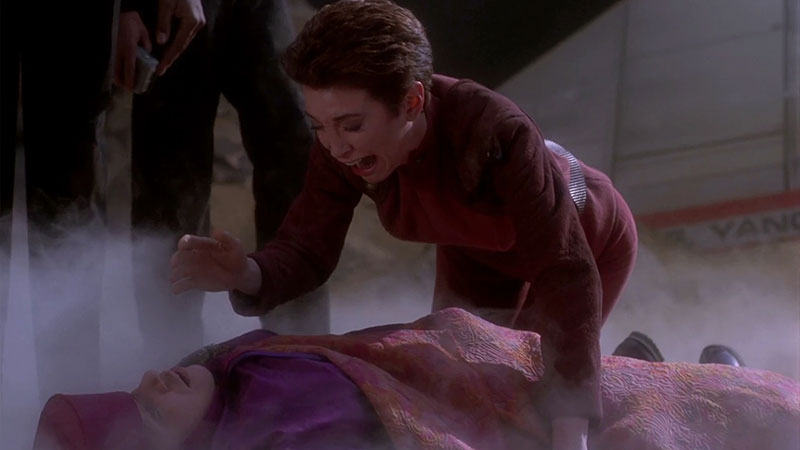
DS9 Vs 2000s Trek
DS9, just like Discovery, is often driven by non-human characters (or, at least, not the Kirk-standard of humans), and Starfleet is merely responding to galaxy-upsetting events, not dictating them.
This show decentralized the average Star Trek viewer, and that was upsetting. Even early in the first season, long before the Dominion War and all its conflict brought to the shores of the Federation, it’s emphasized more than once that Bajor (and the newly found wormhole) are on the outskirts of “civilization” for our normal Trek characters, thrust into the wilderness that is, in actuality, the centre of civilization for many people. Just not us.
In much the same way as Picard, was interested in exploring the nuance and taking off the blinders over emotion that accompany those galaxy-shifting events, even if in so doing that reveals something that we didn’t like.
In TNG we never saw the real outcomes of Wolf-359. We saw pieces of Cardassian brutality in episodes like “Ensign Ro” and “The Wounded” and we tried sympathizing with terrorists in “The High Ground” but we never had to remain there for very long.
DS9 went ahead and put the trauma of the Cardassian occupation of Bajor front and centre in the form of Major Kira, then set the entire show on a station that placed itself geopolitically at the centre. A centre far away from us.
The echoes of complaints of “bad writing” and “unbelievable situations” “too much crying” and “leans too much on previous material without generating new stories” resonate in my mind in the current era.
So, it’s plainly obvious that I was not up to the challenge that DS9 was offering me, at least in 1993. I abandoned ship fairly quickly and kept up my habit with the far safer approach that Voyager took. It was a mistake, reader.
Thirty years on, however, after the varied successes of Discovery, Picard, Lower Decks, and Strange New Worlds, it’s a great time to revisit and reflect on DS9’s launch and the first season through a lens only time can provide.
For this forty-something fan, it sure was a lot easier to let the showrunners take me where they wanted to go than it was for my teenage self. I know DS9 is no longer burdened with a lot of the baggage it had initially, and that it has enjoyed well-earned respect that has grown over the years.
I join the crowd who openly admits we were wrong about the show and invite others of my ilk who maybe haven’t made that journey yet. It’s a great time to come on board.

